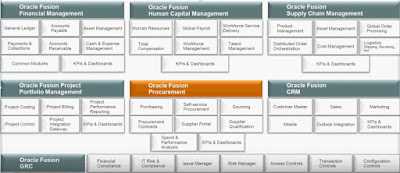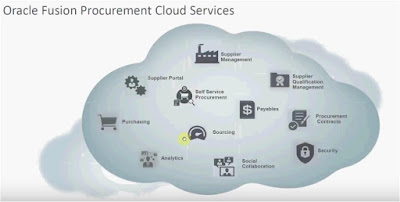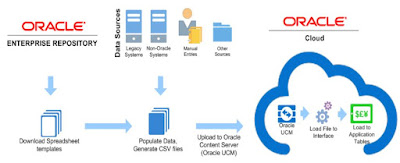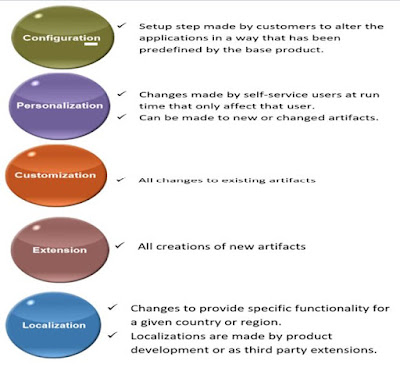In the meantime, while heavily investing in E-Business Suite particularly in 3 areas: Modern User Experience (UX), Functional Innovation, and Operational Efficiency Cliff Godwin gave us a hint about introducing at least 3 other E-Business Suite releases by the end of the decade.
Oracle E-Business Suite’s roadmap shows that Oracle is still committed to continuing on the R12 series of releases. A projected timeline shows release 12.2.7 is coming at an indefinite date, with release 12.3.
ORACLE EBS 12.2.6 Delivers to Strategic Investments in EBS Products
Cliff Godwin, SVP of Application Development, said that Oracle continues to invest in 3 main areas of focus throughout 12.2: functional innovation, user experience, and operational efficiency.
Functional flows for modern business in integrated global suite
- The subscription economy
- Outcome Driven procurement
- Customer driven enhancements
Modern user experience and Mobility: Simple and actionable user experience for operational roles
- User experience convergence
- Smartphone applications
- EBS Information Discovery.
Oracle E-Business Suite 12.2.6 continues an ongoing pattern of user experience modernization that emphasizes simplified layouts, tablet optimization, and consistency with Oracle Cloud products. Key advances include:
More Tablet-Optimized User Interfaces: Additional tablet-optimized UIs are provided in functional areas where users have a high mobility requirement, including shipping, receiving, and reservations.
More HTML User Interfaces: HTML alternatives to several existing Forms interfaces offer simpler layouts and more modern user interactions. Examples include the Update Assets UI in Enterprise Asset Management, and AOL setup UIs for Users, Responsibilities, and Flexfields.
Enhanced Information Discovery Applications:
Operational Efficiency Lower effort and cost to operate and optimize EBS system.
-online patching
- Application management
- Automated Testing.
Oracle Receivables:
Multiple Tax Rates in One VAT Invoice:
Golden Tax Adaptor now allows multiple tax rates in one VAT invoice. VAT invoices with multiple tax rates no longer need to be split by tax rate
Support for Tax-Inclusive and Tax-Exclusive Business Cases:
Golden Tax Adaptor now supports both tax-inclusive and tax-exclusive business cases. The Invoice Export flat file has been modified to support the Aisino Golden Tax System calculation of tax and invoice amounts for tax-inclusive and tax-exclusive business cases
.
Oracle iReceivables:
End Date Bank Account without Payment Processing:
-Customers now have the ability to end date bank accounts without processing a payment against that account, and without restricting end dates to a future date.
-Users can mange Credit Cards and Bank Accounts at Account or Site levels without an Invoice or processing the payment flow
Oracle Advanced Collections:
Collect on Related Accounts
-Customers require the ability to assign collectors at multiple collection levels, enabling them to run scoring and strategies at Customer, Account, and Bill- To levels.
-Customers now group parties with parent and child relationships to score, assign and manage strategies, assign collectors, and view aggregate information on related accounts. Strategy Actionable Work Items.
-Strategy Actionable Work Item template rules are now available to allow users to execute work items based on the percentage amount collected. When the user or system completes the work item, post-wait, based on the amount received and associated rule definition, the system will skip or continue the next work item in the strategy. Additionally, Strategy Templates and Work Item Templates can be defined for a specific Operating Unit.
CHRM:
Period Management, Enhancements in AutoPay
Oracle Financials Information Discovery (Endeca):
-Oracle Financials Information Discovery for Oracle Assets has been enhanced to include two new pages, namely ‘Asset Reconciliation’ and ‘Sub-ledger Additions Pipeline’.
-In the Account Reconciliation page you can view account balance reconciliations and quickly identify any discrepancies between sub-ledger accounting balances for Oracle Assets and Oracle General Ledger balances for asset cost, CIP cost, asset clearing, CIP clearing account, and Accumulated Depreciation.
-The Sub-ledger Additions Pipeline page enables you to get an early estimate of any transactions in Oracle Payables and Oracle Projects, which are tracked as assets but not yet transferred to Oracle Assets, to assess the significance to your asset base
-In addition to the original full asset load into Oracle Financials Information Discovery tables, further capability has been added to enable you to load mass transactions incrementally into Oracle Financials Information Discovery.
-Oracle E-Business Suite Information Discovery applications include more product content and enhancements, enabling users to identify and act on high-priority transactions without custom operational reporting. New capabilities include a 360-degree order view in Order Management, asset reconciliation with GL in Financials, and Boolean search support in Installed Base.
Order Management
-Order Management: Recurring Billing
-Quoting: Document Approvals using Electronic Signatures
Logistics
-WMS: Inbound Task Management & Interleaving
-Invoice: Material Classification
-Yard: Distributed Yard
Procurement
-iProcurement: Spot Buy, Preferred Items
-Contract Relationships
-PCC: Sourcing
-Project Procurement: Revisions
-Oracle Procurement Command Center provides an enhanced view of supplier performance that includes employee reviews from Oracle iProcurement and supplier evaluations from Oracle Supplier Lifecycle Management.
-.Oracle Project Procurement Command Center better aligns project and procurement teams with visibility to line-level changes to procurement plans. Oracle iProcurement now supports a spot buying process that lets privileged requestors create certain purchase orders without involving the procurement team. Procurement buyers can influence search relevance rankings in Oracle iProcurement Information Discovery to guide end users to preferred items and suppliers. Oracle Procurement Contracts delivers a complete view of linkages between procurement documents and contracts.
Projects
-Accounting Adjustment Options
-SOV & ARR Effort Coefficient
-Consolidated Invoice UI
Manufacturing
-Process Manufacturing: Yield Management
-Project Manufacturing: LCM Support
-MES: Serialized Manufacturing Enhancements
Value Chain Planning
-Inventory Policy Planning
-Enhanced UIs
Asset Management
-Linear Assets Enhancement WO Creation
-Calendar Based Preventive Maintenance
-WO Package Printing
Service
-Multiple Products on SR
-Task Status by Task Type
-GPS Based Emergency Scheduling
-Depot: Claims
Human Capital Management
-Pay: Enhanced Retropay Analysis
-OTL: Overtime as Absence Accrual, Calendar UI
for more information please go through the below link.
























